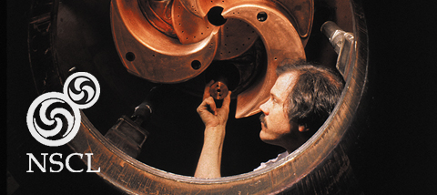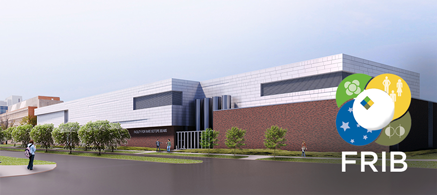NSCL Publications
Research published by NSCL researchers and users.

NSCL enabled world-class discoveries by pioneering research with rare isotopes. Nuclear physics research began at Michigan State University in 1958. In the decades that followed, MSU became known, both in the United States and worldwide, for its innovations in nuclear science and associated cross-disciplinary research. Major contributions have been made in the fields of nuclear structure, nuclear astrophysics, heavy-ion reaction mechanisms, accelerator physics, beam dynamics and experimental techniques.
NSCL was the source of innovations that improve lives. A medical cyclotron built by the laboratory in the 1980s was used to treat cancer patients at Harper University Hospital in Detroit for more than 15 years. NSCL technology and design were used in a higher-powered medical cyclotron built by Varian Medical Systems. The collaboration agreement, an example of technology transfer that returns benefits to the university, brought more advanced nuclear therapy to cancer patients in several countries.
Over the years, NSCL had evolved into the largest campus-based nuclear science facility in the country. NSCL focused on education and the development of the next generation of scientists. MSU awards approximately 10 percent of the nation’s nuclear science doctorates and, according to U.S. News & World Report, is the number one program in nuclear physics graduate education. Read more about Research at NSCL here.


Michigan State University (MSU) operates the Facility for Rare Isotope Beams (FRIB) as a user facility for the U.S. Department of Energy Office of Science (DOE-SC), supporting the mission of the DOE-SC Office of Nuclear Physics. The establishment of FRIB was funded by DOE-SC, MSU, and the State of Michigan, and user facility operation is supported by the DOE-SC Office of Nuclear Physics.
Hosting what is designed to be the most powerful heavy-ion accelerator, FRIB enables scientists to make discoveries about the properties of rare isotopes (that is, short-lived nuclei not normally found on Earth), nuclear astrophysics, fundamental interactions, and applications for society, including in medicine, homeland security, and industry.
This video — The Facility for Rare Isotope Beams at MSU — explains the history of FRIB, its role in research and education, and its future in rare-isotope discoveries. It includes an animated sequence to help viewers understand what FRIB is about.
FRIB enables scientists to make discoveries about the properties of rare isotopes in order to better understand the physics of nuclei, nuclear astrophysics, fundamental interactions, and applications for society. As the next-generation accelerator for conducting rare isotope experiments, FRIB allows scientists to advance their search for answers to fundamental questions about nuclear structure, the origin of the elements in the cosmos, and the forces that shaped the evolution of the universe.
Located at MSU—home of the top-ranked U.S. nuclear physics graduate program—FRIB is a DOE-SC scientific user facility that provides researchers with the most advanced tools of modern science. In creating this new one-of-a-kind facility, FRIB builds upon the expertise and achievements of NSCL. FRIB looks beyond NSCL’s discoveries to envision the next-generation technology needed for next-generation rare isotope experiments. The foundation of this vision—now the design of FRIB—is to use fast, stopped, and reaccelerated rare isotope beams produced by fragmentation to yield consistently high intensities of beams in minimal beam development times.